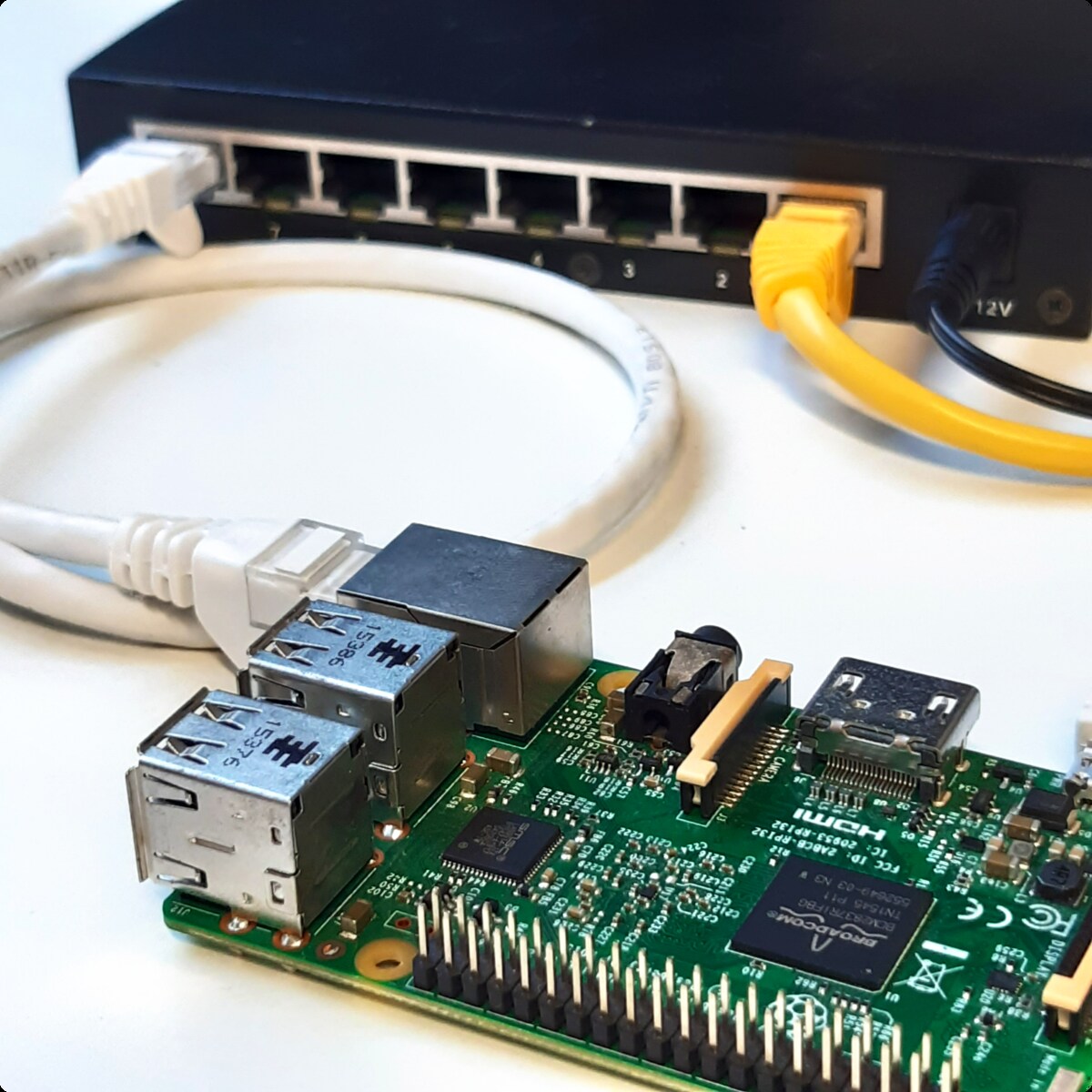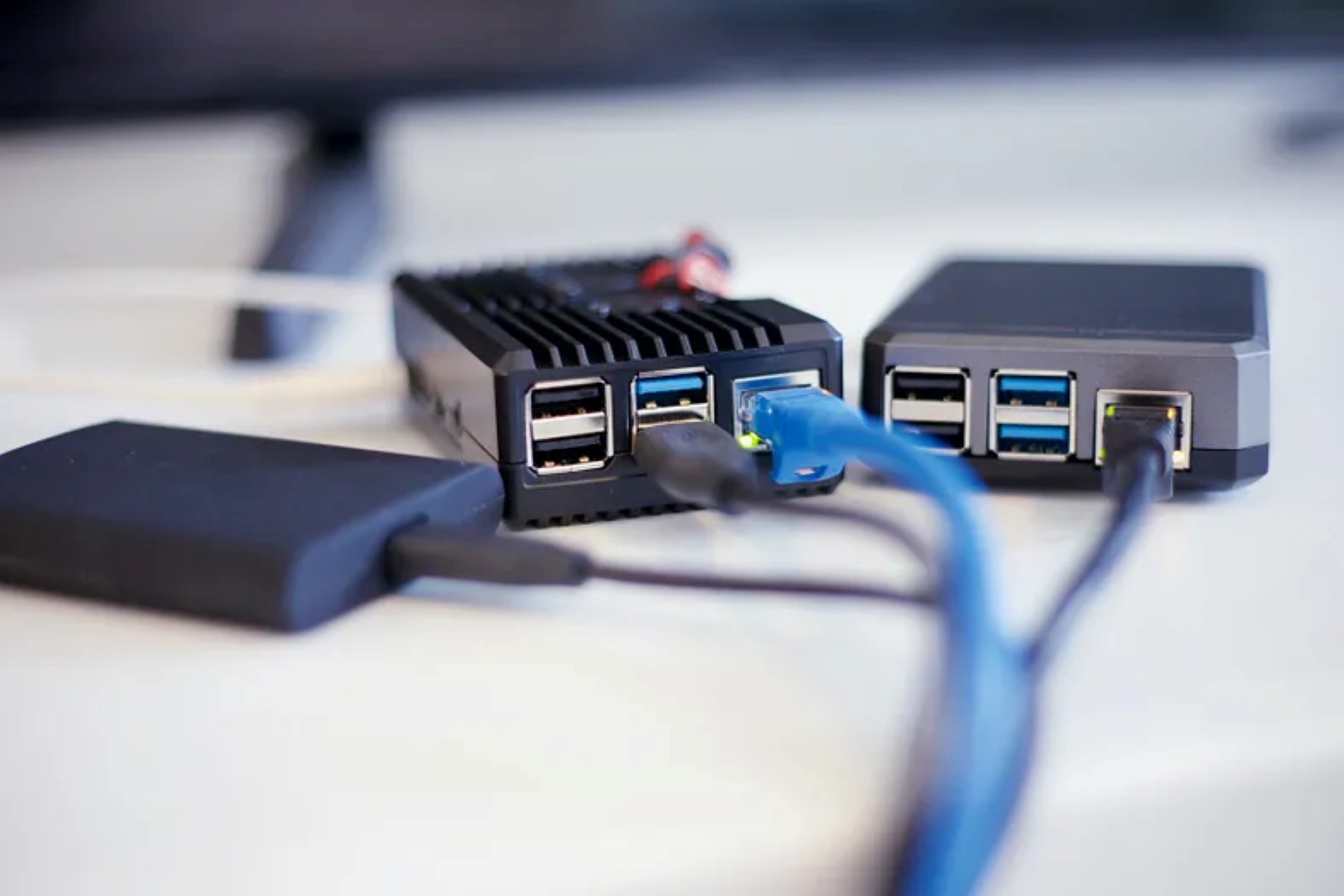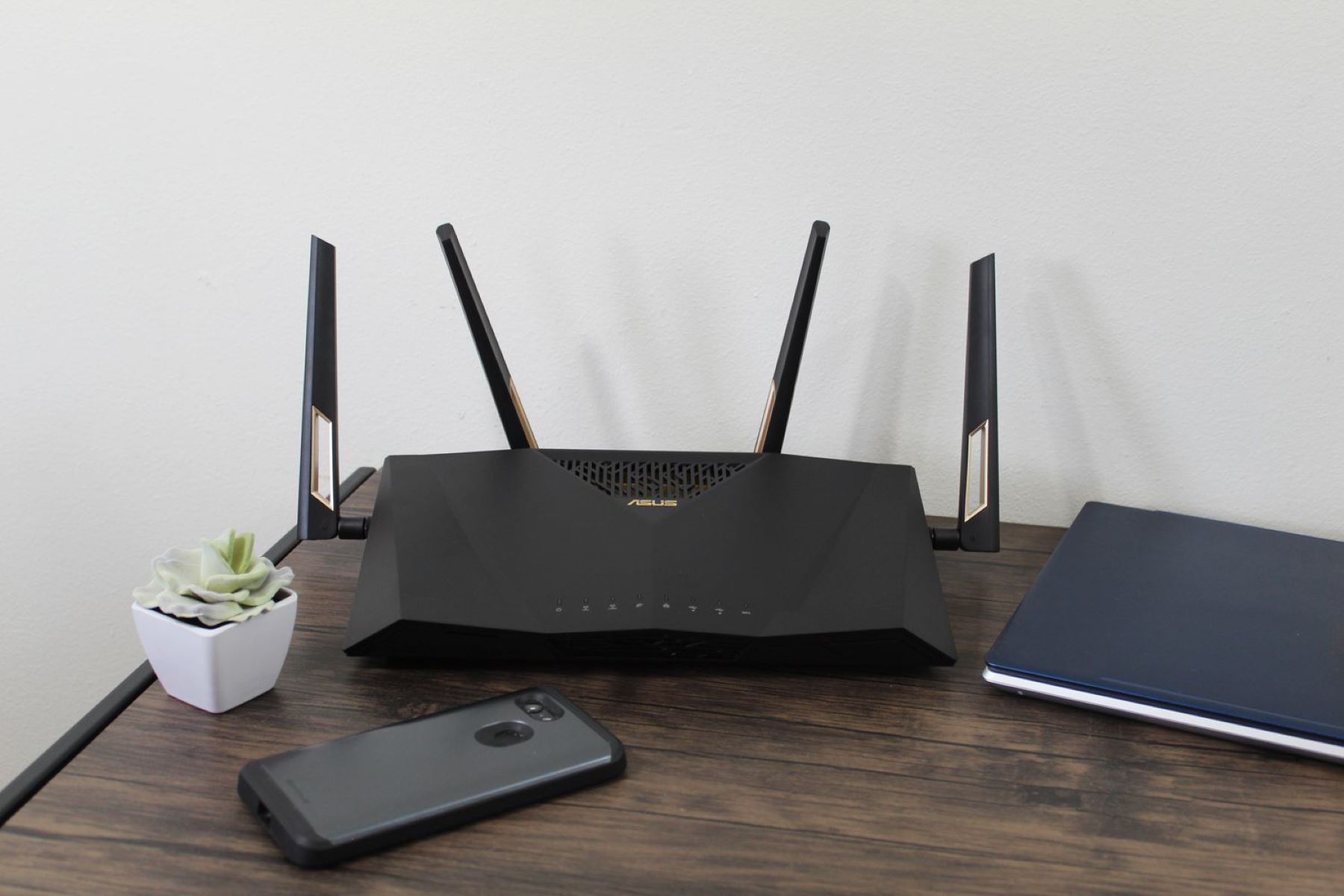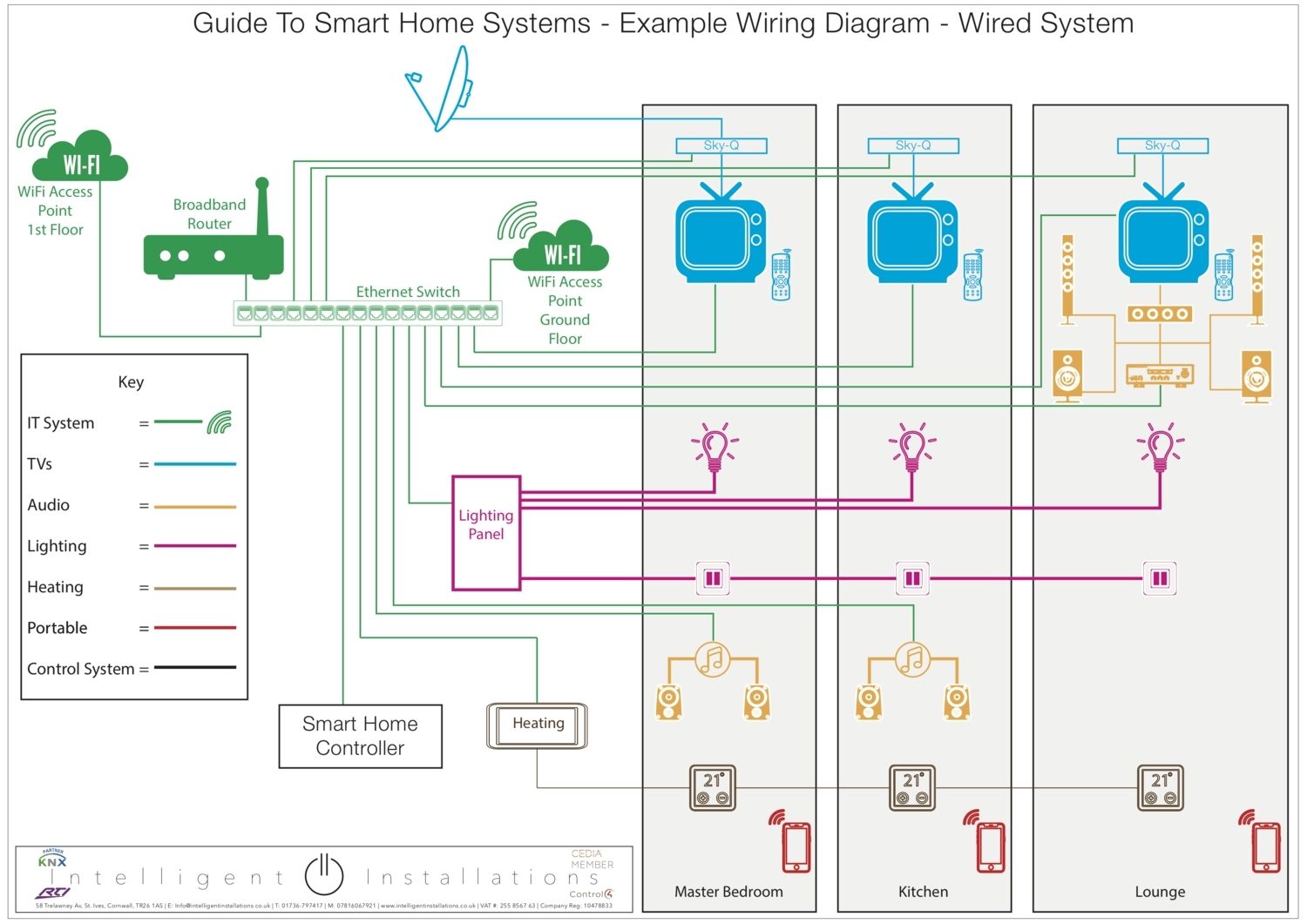MAC Addresses
One of the primary methods that switches and wireless access points use to control and manage network traffic is through MAC addresses. MAC, or Media Access Control, addresses are unique identifiers assigned to network interface controllers (NICs) at the hardware level. Each device connected to a network, such as computers, servers, printers, and network devices, has a unique MAC address.
Switches and wireless access points use MAC addresses to determine the source and destination of network packets. When a device sends a packet, it includes the MAC address of both the source and the intended recipient. The switch uses this information to direct traffic only to the port associated with the intended MAC address, which helps to optimize network performance.
MAC addresses also play a crucial role in VLANs (Virtual Local Area Networks). VLANs allow a network to be divided into multiple logical subnetworks, even if physically connected to the same switch. By assigning specific MAC addresses to different VLANs, switches can control which devices can communicate with each other, enhancing network security and traffic management.
DHCP (Dynamic Host Configuration Protocol) is another mechanism that utilizes MAC addresses. DHCP servers assign IP addresses dynamically to devices on a network, and they use the device’s MAC address to identify and assign the appropriate IP address. This ensures that multiple devices on the network have unique IP addresses without manual configuration.
Access Control Lists (ACLs) are used to control network traffic by specifying rules for allowing or blocking traffic based on various criteria, including MAC addresses. By specifying MAC addresses in ACL rules, switches and wireless access points can restrict or allow specific devices from accessing certain network resources or services.
Overall, MAC addresses are essential for switches and wireless access points to control and manage network traffic effectively. By utilizing MAC addresses in VLANs, DHCP, ACLs, and other control mechanisms, these devices can ensure optimal performance, security, and network resource allocation.
VLANs
VLANs, or Virtual Local Area Networks, are a fundamental tool used by switches and wireless access points to control network traffic. VLANs allow network administrators to divide a physical network into multiple logical subnetworks, even if they are connected to the same physical switch.
By creating VLANs, network administrators can segment the network based on various factors such as departments, functions, or security requirements. This segmentation provides several benefits:
- Improved Security: VLANs help to enhance network security by isolating traffic between different segments. Devices within a VLAN can communicate with each other but are restricted from communicating with devices in other VLANs without proper configuration.
- Efficient Network Utilization: VLANs allow administrators to prioritize and allocate network resources based on the needs of each segment. This ensures that critical applications or devices receive the necessary bandwidth and reduces the chances of congestion.
- Simplified Network Management: By logically segmenting the network, administrators can apply specific network policies, such as access control lists and quality of service (QoS) settings, to each VLAN. This simplifies network management tasks and improves overall network performance.
Switches play a crucial role in VLAN implementation. They associate specific ports with specific VLANs, allowing devices connected to those ports to communicate within the VLAN. Trunk links are used to carry traffic for multiple VLANs between switches.
Wireless access points also support VLAN functionality. They can be configured to assign wireless clients to different VLANs based on predefined rules or authentication methods. This enables effective guest network management, facilitates network segregation, and ensures secure access for different user groups.
Moreover, the use of VLANs can enhance network scalability and flexibility. Network administrators can easily add or remove VLANs as needed without physically reconfiguring the network infrastructure. This flexibility facilitates network expansion or changes without disrupting the entire network.
In summary, VLANs play a vital role in network control for switches and wireless access points. They provide improved security, efficient network utilization, simplified network management, and enhanced scalability. By dividing the network into logical segments, administrators can effectively manage and control network traffic for optimal performance and security.
DHCP
DHCP, or Dynamic Host Configuration Protocol, is a vital component used by switches and wireless access points to control and manage network IP address assignment. DHCP servers play a significant role in automating IP address allocation and reducing the manual configuration efforts required for individual devices on the network.
When a device connects to a network, it typically requires an IP address to communicate. DHCP servers dynamically assign IP addresses, along with other network configuration parameters, to requesting devices. This allows devices to join the network seamlessly without the need for manual IP address assignment.
Switches and wireless access points act as intermediaries for DHCP transactions. When a device connects to the network, it sends a DHCP discover message. The switch or access point receives this message and broadcasts it to the DHCP server. The DHCP server then responds with a DHCP offer, including the assigned IP address and other configuration information.
DHCP works hand in hand with MAC addresses to ensure accurate IP address assignment. When a device sends a DHCP request, it includes its MAC address as part of the request. DHCP servers maintain a database known as a lease pool, which stores the mapping between MAC addresses and assigned IP addresses. This ensures that devices receive consistent IP addresses each time they connect to the network.
Furthermore, DHCP supports lease management, where IP addresses are temporarily assigned to devices for a specified period. Lease durations can be customized based on network requirements, allowing DHCP servers to reclaim and reassign addresses that are no longer in use, preventing IP address exhaustion.
In addition to IP address assignment, DHCP servers can provide other configuration information to devices, such as subnet masks, default gateways, and DNS server addresses. This allows devices to obtain all necessary network settings automatically, simplifying the network configuration process.
It’s important to note that DHCP servers can be configured to assign IP addresses based on different criteria, such as VLAN membership or device attributes. This flexibility enables network administrators to implement sophisticated IP address management strategies tailored to their specific network needs.
In summary, DHCP plays a crucial role in network control for switches and wireless access points. By automating IP address assignment and providing essential network configuration parameters, DHCP simplifies the process of connecting devices to the network and ensures efficient and reliable network communication.
Access Control Lists (ACLs)
Access Control Lists (ACLs) are an essential tool utilized by switches and wireless access points to control and manage network traffic based on various criteria. ACLs enable network administrators to define rules that determine whether to allow or deny traffic flow between different devices, networks, or services.
ACLs operate at a network layer, typically the IP layer, and evaluate packets based on source and destination IP addresses, protocols, port numbers, and other factors. Using ACLs, administrators can enforce network policies, enhance security, and optimize network performance.
One of the primary use cases of ACLs is to restrict access to specific network resources or services. By configuring ACL rules, administrators can define which devices or networks are allowed to communicate with certain resources or services. For example, an ACL can be used to only allow certain IP addresses to access a critical server or to block traffic from specific malicious IP addresses.
ACLs can also be employed to prioritize or throttle network traffic using Quality of Service (QoS) settings. By defining ACL rules that match specific traffic patterns, administrators can give priority to critical applications or limit bandwidth for certain types of traffic. This ensures that network resources are utilized efficiently and that important applications receive the needed throughput.
In addition to IP-related criteria, ACLs can also take MAC addresses into account. By configuring ACL rules based on MAC addresses, switches and wireless access points can control access to specific devices or restrict communication between devices within the same network or VLAN.
When implementing ACLs, it is essential to consider the order of the rules. ACLs are processed sequentially, and the first matching rule determines the action to be taken. Administrators should organize ACL rules in a logical and efficient order to optimize performance and avoid unintended consequences.
Furthermore, ACLs can be applied to different network interfaces, such as inbound or outbound on a switch port or wireless access point. This flexibility allows administrators to apply specific access control policies tailored to different network segments or types of traffic.
By effectively utilizing ACLs, switches and wireless access points can enforce network security policies, prioritize traffic, and control access to network resources. The granular control provided by ACLs enhances network performance, protects critical assets, and ensures that network traffic aligns with organizational requirements.
Quality of Service (QoS)
Quality of Service (QoS) is a crucial feature utilized by switches and wireless access points to control and prioritize network traffic, ensuring optimal performance and efficient resource utilization. QoS enables network administrators to assign different levels of priority to various types of traffic, such as voice, video, or data.
By implementing QoS, administrators can guarantee that critical applications receive the necessary bandwidth and network resources, even during periods of high network congestion. QoS operates by prioritizing and managing traffic flow based on specific criteria, such as application type, source or destination IP address, protocol, or port number.
One of the primary benefits of QoS is the ability to prioritize real-time applications, such as Voice over IP (VoIP) or video conferencing. These applications require low latency and a consistent network connection to ensure clear and uninterrupted communication. QoS can allocate sufficient bandwidth and establish priority queues to ensure that voice and video traffic are given preferential treatment over other forms of traffic.
QoS also allows administrators to manage and control bandwidth allocation for different types of traffic. By setting maximum limits or throttling specific types of traffic, administrators can prevent any single application or traffic type from monopolizing available network resources. This prevents network congestion and ensures fair resource allocation across different applications and users.
Additionally, QoS can be used to classify and prioritize traffic based on different levels of importance or urgency. For example, in healthcare environments, life-critical medical devices may be assigned the highest priority, while email or file transfer traffic may be assigned lower priority. This ensures that critical operations are not hampered by less time-sensitive applications.
Switches and wireless access points implement QoS using queuing mechanisms such as weighted fair queuing (WFQ) or class-based queuing (CBQ). These mechanisms allocate bandwidth fairly and intelligently based on the priority assigned to each traffic class or application.
It’s worth noting that QoS operates within the network, and both the sending and receiving devices must support QoS features for effective traffic prioritization. If QoS is implemented only at a local network level and not across the entire network path, its benefits may be limited.
In summary, Quality of Service (QoS) is an essential feature used by switches and wireless access points to control and prioritize network traffic. By allocating sufficient bandwidth, managing priorities, and preventing network congestion, QoS ensures optimal performance for critical applications and improves overall network efficiency and user experience.
Power over Ethernet (PoE)
Power over Ethernet (PoE) is a convenient and efficient technology used by switches and wireless access points to provide both power and data connectivity to network devices. PoE eliminates the need for separate power cables and power adapters, simplifying network deployments and reducing installation costs.
With PoE, network administrators can easily power devices such as IP cameras, wireless access points, VoIP phones, and IoT devices, directly through the Ethernet cable. This eliminates the need for power outlets near each device, making it easier to deploy devices in locations where power availability may be limited.
PoE is standardized by the IEEE 802.3af and 802.3at standards. These standards define the power delivery methods and the maximum power that can be provided to connected devices. PoE injectors or PoE-enabled switches deliver power over unused pairs of Ethernet cables, while still transmitting data on the remaining pairs.
Switches and wireless access points that support PoE have dedicated PoE ports or slots that can connect directly to PoE devices. These devices negotiate power requirements with the switch, ensuring that the appropriate amount of power is provided without causing damage or power overload.
One of the significant advantages of PoE is its ability to provide power to network devices in locations where electrical power may be inaccessible or impractical. This makes it particularly useful for deploying wireless access points in areas such as ceilings, walls, or outdoor spaces where power outlets may not be readily available.
PoE also simplifies network management, as devices do not require separate power management or monitoring. Administrators can remotely control and configure PoE devices, apply power cycling, or perform diagnostics, all from a central management system.
There are different power levels supported by PoE, with the latest standard, IEEE 802.3bt, providing higher power capabilities for devices with greater power requirements. This enables the deployment of power-hungry devices such as high-end pan-tilt-zoom (PTZ) cameras or advanced wireless access points that require additional power for features such as multiple antennas or integrated Bluetooth and Wi-Fi support.
It’s important to note that when deploying PoE devices, administrators must ensure that the power supplied by the PoE switch or injector is sufficient for the connected devices. Factors such as cable length, power loss within the Ethernet cable, and power budget of the switch need to be considered to avoid insufficient power supply.
In summary, Power over Ethernet (PoE) is a convenient and cost-effective technology used by switches and wireless access points to provide power and data connectivity to network devices. PoE simplifies deployments, reduces installation costs, and enables centralized management of powered devices, making it an ideal solution for numerous applications in modern network infrastructures.
Radio Frequencies (RF) in Case of Wireless Access Points
Wireless access points (APs) utilize radio frequencies (RF) to transmit and receive data wirelessly, allowing devices to connect to the network without the need for physical connections. The selection and management of RF frequencies are critical for the proper functioning and performance of wireless networks.
Wireless APs operate within specific frequency bands, such as the 2.4 GHz and 5 GHz bands. These bands are divided into multiple channels, and each channel represents a specific frequency range. Selecting the appropriate channel is essential to ensure optimal wireless network performance and avoid interference from other nearby wireless networks or devices.
The 2.4 GHz band provides greater range but is more susceptible to interference from various devices like cordless phones, microwave ovens, and Bluetooth devices. On the other hand, the 5 GHz band offers faster data rates and a better immunity to interference, but it has a shorter range compared to the 2.4 GHz band.
When deploying wireless APs, administrators must analyze the RF environment to determine the least congested channels and assign the APs to those channels. This involves conducting a site survey and using tools to measure signal strength and identify sources of interference. By strategically selecting channels with minimal interference, administrators can optimize network performance and minimize the impact of neighboring networks.
Another consideration in managing RF frequencies is the channel width, which determines the amount of bandwidth available for transmitting data. The wider the channel width, the more data can be transmitted simultaneously, resulting in increased throughput. However, using wider channel widths can lead to increased interference from neighboring networks or devices. Administrators must balance channel width to maximize throughput while avoiding interference and maintaining network stability.
APs also employ techniques such as channel bonding and band steering to optimize RF utilization. Channel bonding combines multiple adjacent channels to create a wider channel for increased data rates. Band steering encourages devices to connect to the less congested 5 GHz band rather than the 2.4 GHz band. These techniques help enhance network performance by utilizing available RF resources effectively.
Furthermore, administrators need to be mindful of the transmit power levels of wireless APs. Adjusting the transmit power appropriately ensures adequate coverage without excessive interference. High transmit power levels can cause co-channel interference with nearby APs, while low transmit power levels may result in weak signal strength, reducing network coverage.
Regular monitoring and analysis of RF utilization are crucial in maintaining optimal performance. Administrators should continuously evaluate the RF environment, detect sources of interference, and adjust channel selection, channel width, and transmit power as needed. This proactive approach ensures maximum utilization of RF frequencies and minimizes the impact of environmental factors on wireless network performance.
In summary, RF frequencies are critical for the functioning of wireless access points. The selection and management of RF channels, channel width, and transmit power levels significantly impact network performance. By analyzing the RF environment, optimizing channel usage, and considering interference factors, administrators can ensure efficient wireless network operation and provide reliable connectivity to devices.
Authentication Protocols
Authentication protocols play a crucial role in ensuring the security of wireless networks. They are used by switches and wireless access points to verify the identity of devices attempting to connect to the network. By requiring authentication, network administrators can control access to the network and protect against unauthorized access.
There are several common authentication protocols used in wireless networks, including:
- WEP (Wired Equivalent Privacy): WEP was one of the earliest authentication protocols used in wireless networks. However, it is now considered insecure due to vulnerabilities that can be easily exploited. WEP should be avoided whenever possible.
- WPA (Wi-Fi Protected Access): WPA is an improved security protocol that addressed the weaknesses of WEP. It introduced stronger encryption methods, such as Temporal Key Integrity Protocol (TKIP) and Advanced Encryption Standard (AES). WPA provides better security than WEP and is still commonly used.
- WPA2 (Wi-Fi Protected Access 2): WPA2 is the most widely used authentication protocol today. It offers stronger security than WPA by using AES encryption and implementing more robust authentication methods, such as 802.1X/EAP (Extensible Authentication Protocol) with RADIUS (Remote Authentication Dial-In User Service) servers. WPA2 is highly recommended for securing wireless networks.
- WPA3 (Wi-Fi Protected Access 3): WPA3 is the latest generation of Wi-Fi security protocols. It offers enhanced security features, including stronger encryption, improved authentication for public networks, and protection against brute force attacks. WPA3 is gradually being adopted and will eventually replace WPA2 as the standard for wireless network security.
In addition to these protocols, the use of 802.1X/EAP with RADIUS servers provides advanced authentication capabilities. This combination allows for individual user authentication and centralized management of user credentials. It supports various authentication methods, such as username/password, digital certificates, and token-based authentication, for secure and flexible network access control.
Authentication protocols work in conjunction with other security measures, such as implementing strong encryption, configuring secure passwords, and regularly updating network devices. It is crucial to follow security best practices and ensure that network devices are kept up to date with the latest firmware patches to address any security vulnerabilities.
Authentication protocols play a vital role in protecting wireless networks from unauthorized access and ensuring the confidentiality and integrity of network communications. By implementing strong authentication protocols and adhering to best practices, administrators can establish a secure and reliable wireless network environment.

























